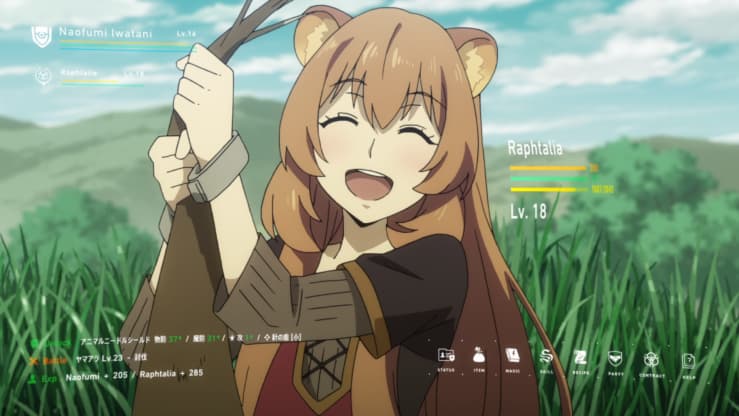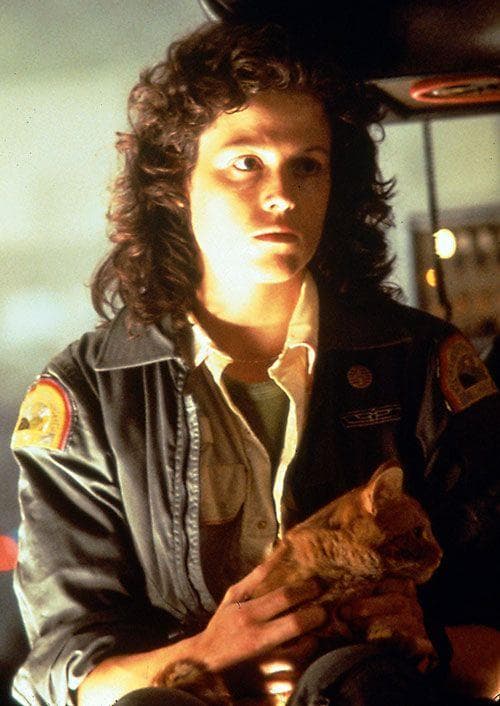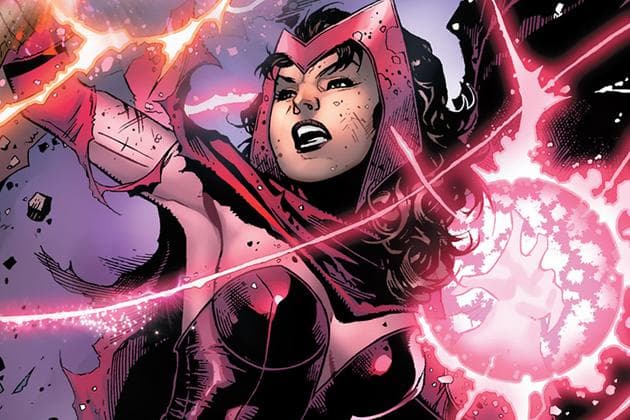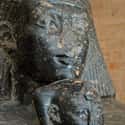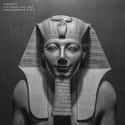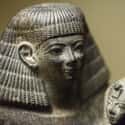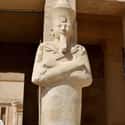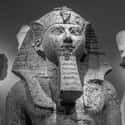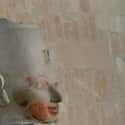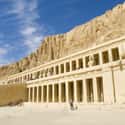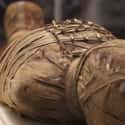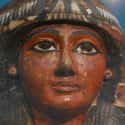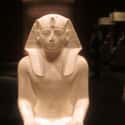-
(#1) She Married Her Half-Brother
Hatshepsut was born the daughter of 15th century B.C.E. ruler Thutmose I and his primary wife, Queen Ahmose. Thutmose fathered a son with a concubine, Thutmose II, who would succeed his father. As was traditional, Hatshepsut married her half-brother Thutmose II.
Her husband/half-brother didn't leave much of a record behind, so exact dates of Hatshepsut's reign as pharaoh are hard to nail down, but as Queen she was especially adept at managing the administrative side of Egyptian politics.
-
(#2) Her Siblings And Daughter All Died Young
Ahmose and Thutmose had four kids. Their children were daughters Hatshepsut and Nefrubity, and sons Wadjmose and Amenmose. Sadly, only Hatshepsut seems to have survived childhood. Her eventual marriage to her half-brother was that much more solidified as the sole surviving princess of her family.
During her marriage to Thutmose II, Hatshepsut bore only one child, a daughter, Neferure. The plan was that Nefrure would marry her half-brother, Thutmose III (Thutmose II's son by a concubine. Sensing a pattern here?).
Hatshepsut took the title "King" when she essentially became pharaoh. Her daughter was given the title "God's Wife" as part of the ritual. Due to the lack of mention of Nefrure in Hatshepsut's later years as pharaoh, evidence would suggest she died young, most likely before marrying her brother.
-
(#3) She Took The Throne From Her Nephew/Stepson, Thutmose III
Thutmose II died around 1497 B.C.E. He fathered one son, Thutmose III, with a secondary wife before his death. As Thutmose III was still too young to rule when Thutmose II died, a regent was needed to rule until he matured. Hatshepsut was ready to step in having been well-groomed for governance.
As the years went on and Thutmose approached maturity, Hatshepsut wasn't inclined to loosen her grip on the reins of power. For a few years, she kept up the "regent" act, but seven years in, Hatshepsut abandoned all pretense and assumed the full title of a king. She was crowned pharaoh in her own right, co-ruling with Thutmose III only on paper.
-
(#4) Her Number One Advisor Might Have Been Her Lover
After her husband died, Hatshepsut gathered her advisors around her. Among them were the long-lived Ahmose Pennekhbet and the architect Senenmut, the latter of whom played a particularly significant role in her reign. Senenmut designed Hatshepsut's funerary temple at Deir el-Bahri, a magnificent structure. He also carved his own likeness into a few secret places in chapels in her temple.
Senenmut was particularly close to the royal family serving as tutor to Princess Neferure and was depicted giving her a hug in one monument. Archaeologists discovered a few dozens statues of Senenmut, a lot for a royal advisor. He built his own temple near hers.
Whether or not Hatshepsut and Senenmut were lovers or just had a good working relationship is up for debate. One sexual depiction (ancient graffitti) in Hatshepsut's temple may represent the pair mid-coitus but it's just conjecture.
-
(#5) Hatsepshut Spread Rumors About Being The Daughter Of A God
A female pharaoh was very unusual in Egypt. In order to claim the throne a pharaoh had to prove their were divinely appointed. Depictions etched into Hatshepsut's funerary temple show Amun, king of the gods, having sex with Hatshepsut's mother, Queen Ahmose.
By commissioning these representations of herself as a daughter of the gods, she perpetuated the belief that she was a legitimate heir to the throne.
-
(#6) She Portrayed Herself As Both Male And Female
Hatshepsut also justified her reign by building lots of statues of herself as pharaoh. Often likenesses of her included a kilt, headdress, and false pharaoh beard. Depicting herself with male features was one way to remind her people of similarities to her father and thus her right to be pharaoh.
She also adopted royal titles in masculine form, though sometimes used feminine pronouns. In other artistic likenesses, her body is clearly female even though she wears accessories typical of a pharaoh. She's even been shown as a man and woman at the same time, embodying a divine duality, perhaps.
-
(#7) She Wasn't Above Building Monuments To Herself To Improve Her Reputation
Pharaohs loved to build monuments - obelisks, temples to the gods, statues of themselves - and Hatshepsut was no exception. She put up four giant obelisks at the temple complex of Karnak in honor of Amun. She covered them in electrum (a gold-silver mixture) to reflect the rays of the sun, represented in Amun.
On one of the obelisks reads an inscription that can still be read today. Words that show how much Hatshepsut wanted to spin public perception of herself:
"I acted for him with a straightforward heart, as a king does for any god...Let not anyone who hears this say it is boasting which I have said, but rather say, 'How like her it is, she who is truthful to her father.' The god knows it in me [namely] Amun, Lord of the Thrones of the Two Lands...I am his daughter in very truth, who glorifies him."
-
(#8) She Is Responsible For Opening Major Trade With A Wealthy Neighboring Land
One of Hatshepsut's most famous accomplishments was opening up a trade route to the fabled land of Punt. Historians are unsure where Punt is in modern times but it was written about as a wealthy land located somewhere between Kenya and Saudi Arabia. It was known to be rich in incense and gold.
On her temple walls at Deir el-Bahri, a massive trade expedition Hatshepsut sent to Punt is depicted. Men brought back incredible riches, ranging from ivory to leopard skins and incense. In these images, the queen of Punt is intriguingly shown as an obese woman, possibly to represent the extreme wealth of her country.
-
(#9) Her Funerary Temple Is Among Egypt's Most Epic Landmarks
Hatshepsut's biggest building project was her funerary temple, meant to celebrate her life for all eternity. Now called Deir el-Bahri, the complex is nestled in the cliffs near the Valley of the Kings. She adorned the walls of the temple with her biography, stories of her glorious birth and reign, and remnants of incense trees. The trees were probably hauled back from Punt, a journey also chronicled on her walls.
This was where she would make sure generations to come would remember her great deeds.
-
(#10) The Discovery Of Hatshepsut's Mummy Finally Shed Light On How She Died
In 2007, Hatshepsut's mummy was finally identified, and scholars now know she had quite a few ailments. From her mummy, specialists deduced she was obese and suffered from diabetes and bone cancer. The bone cancer is considered the culprit for her death at 50 years of age.
There is a more recent theory suggesting the queen used a face cream that would have, over time, poisoned her or even been connected to the cancer that may have killed her. While Egyptians were quite advanced in medicine, they used quite a few ingredients now known to be internally harmful.
-
(#11) Hatshepsut Went Bald In Old Age And Wore Nail Polish
Analyzing Hatshepsut's mummy provided more information about what she looked like. For one, she was balding at the time of her death, mostly losing hair at the back of her head. Her nails were also painted both black and red in what may have possibly been a reference to the Red Land (desert) and Black Land (fertile soil) of Egypt.
-
(#12) The Next Pharaoh Tried To Erase Hatshepsut's Legacy
After she died, Hatshepsut's name was chiseled out of certain monuments bearing her moniker in an attempt to erase all memory of her. In ancient Egypt, eliminating someone's name meant their spirit would perish in the afterlife, so this was a huge insult and affront to the memory of a pharaoh.
More than likely her nephew/stepson Thutmose III was the one to order these erasures. In anger for Hatshepsult's usurping of his throne, this may have been his payback. More than likely, since Thutmose III allowed Hatshepsut a proper funeral and burial, he simply wanted his reign to be more regarded in history than his predecessor. Enough of Hatshepsut's impact remains for her to be remembered by history forever.
New Random Displays Display All By Ranking
About This Tool
Hatshepsut was the only female pharaoh in ancient Egypt and the only woman who ever ruled Egypt. Hatshepsut Temple is located on the west bank of the Nile River in Luxor. This Queen's Temple has a history of more than 3,500 years and is currently recognized as a model of the full integration of ancient architecture and natural landscape in the world.
After her death, the successor pharaoh set out to wipe out the traces of Hatshepsut and ordered the destruction of many sculptures inscribed with her name and portrait. The random tool shares 12 things about the greatest female pharaoh in ancient Egypt.
Our data comes from Ranker, If you want to participate in the ranking of items displayed on this page, please click here.

